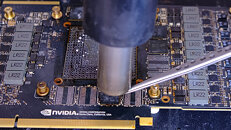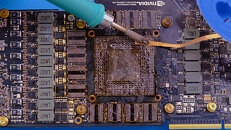
Report: Qualcomm Forces OEMs to Use Its Own PMICs for Oryon SoC
According to SemiAccurate, Qualcomm is currently navigating through many challenges with its Oryon SoC for laptops. The current problem is that Qualcomm is insisting on integrating its own PMICs (Power Management Integrated Circuits), which are inherently designed for cell phones, causing significant compatibility and efficiency issues. This approach is reported to have led to escalated costs and disagreements with OEMs (Original Equipment Manufacturers), seemingly hindering Qualcomm's foothold in the laptop sector. These PMICs are highlighted as unsuitable and highly priced, requiring the adoption of high-density interconnect (HDI) PCBs engineered explicitly for cell phones, thus not designed to meet the current requirements of laptops optimally. The subsequent spike in production costs has ignited conflicts with OEMs, with several contemplating withdrawing from the project.
In response to the rising tensions, Qualcomm is allegedly providing financial compensation to the OEMs, potentially leading to selling SoCs at cost. The only good thing is the reported success of Nuvia-based Oryon SoC. The silicon is perfect at A0 stepping, and performance is reportedly good. However, power usage and efficiency are still in question. Forcing OEMs to use proprietary PMICs will likely have far-reaching impacts on Qualcomm's market strategies and relationships with OEMs. With disputes like this, we expect that Qualcomm-powered laptops are nearing availability, and we could see them in the coming months.
In response to the rising tensions, Qualcomm is allegedly providing financial compensation to the OEMs, potentially leading to selling SoCs at cost. The only good thing is the reported success of Nuvia-based Oryon SoC. The silicon is perfect at A0 stepping, and performance is reportedly good. However, power usage and efficiency are still in question. Forcing OEMs to use proprietary PMICs will likely have far-reaching impacts on Qualcomm's market strategies and relationships with OEMs. With disputes like this, we expect that Qualcomm-powered laptops are nearing availability, and we could see them in the coming months.




































































